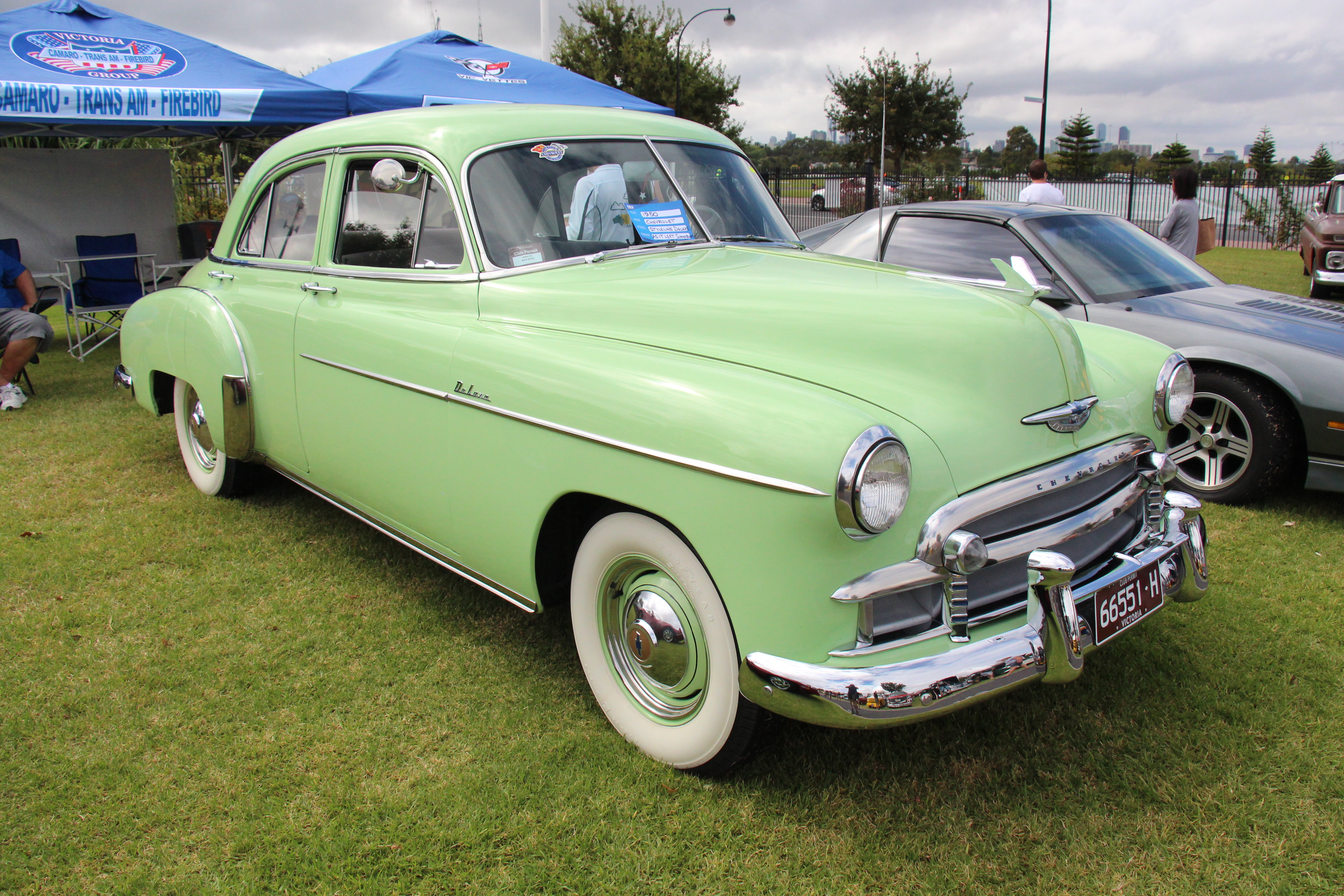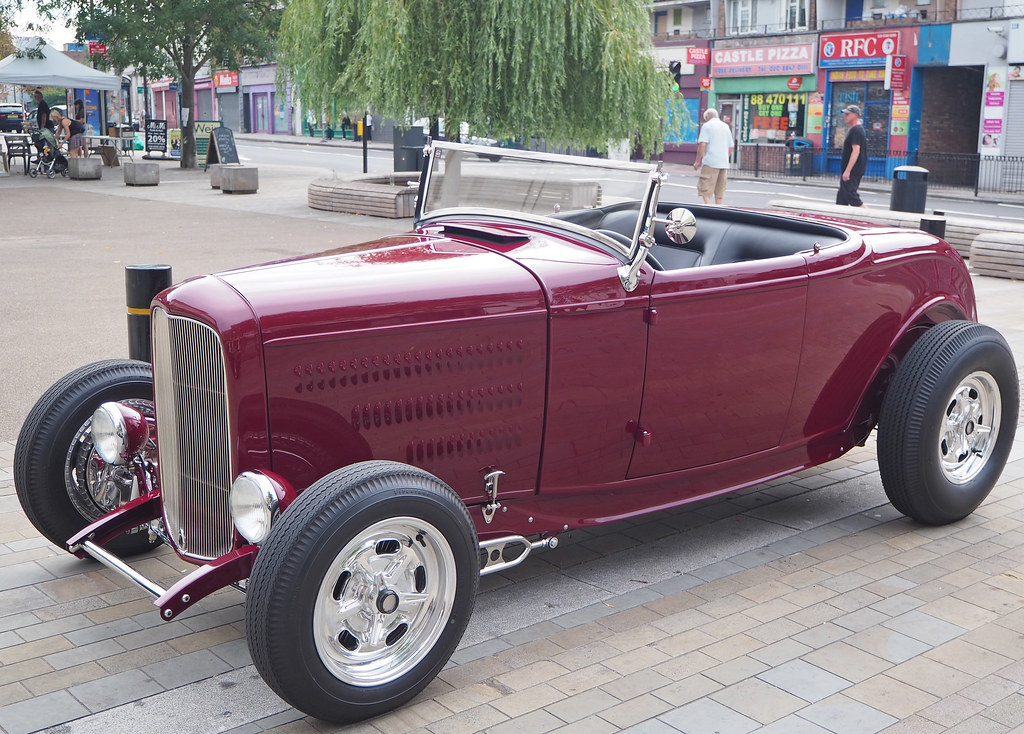
The 1950s automobile industry was a vibrant era filled with groundbreaking innovations and daring design choices, and the 1954 Chevrolet Corvair concept emerged as a standout symbol of this creative spirit. Initially unveiled at the Motorama traveling exhibition, this ambitious project sought to revolutionize the compact car market in America, offering a fastback design inspired by the Corvette that hinted at a thrilling new chapter for Chevrolet.
The Corvair’s design was revolutionary, as it strayed from conventional norms of the time. The hardtop fastback-styled roof not only provided an appealing aesthetic but also showcased Chevrolet’s willingness to embrace new engineering concepts. The vehicle was born out of the vision of Ed Cole, who was the chief engineer of the Chevrolet Motor Division and later became a key player in the overall development of the Chevrolet brand. His foresight positioned the Corvair as a response to the growing popularity of compact cars, particularly the Volkswagen Beetle, which was making waves in the American market.
Corvair’s engineering underpinnings
Delving into the Corvair’s engineering reveals a deep commitment to innovation that set it apart from its contemporaries. Featuring a rear-engine layout that provided a distinctive driving experience and allowed for more spacious interiors, the Corvair’s air-cooled flat-six engine marked a significant shift from Chevrolet’s traditional designs, prioritizing lightweight efficiency with many aluminum components to enhance fuel economy amid rising consumer concerns.

The introduction of independent suspension on all four wheels was yet another leap forward, significantly enhancing ride quality and handling for performance-driven drivers. This pioneering feature not only made the Corvair an attractive option but also influenced other manufacturers, showcasing Chevrolet’s integral role in advancing automotive technology.
The unveiling of the Corvair concept car captured the public’s imagination, earning accolades from audiences and critics alike for its groundbreaking engineering and sleek design. Time magazine featured the Corvair on its cover, heralding it as a symbol of automotive innovation, and the excitement generated eventually led to the launch of the first-generation Corvair in 1960, which continued to evolve and impress until 1969.
The first-generation Corvair offered a variety of body styles, including a 4-door sedan, a 2-door coupe, and a convertible, effectively appealing to a diverse market of families, young professionals, and performance seekers. With around 1.8 million units rolling off the assembly line during its ten-year lifespan, the Corvair’s success underscored a strong consumer appetite for compact cars that married innovative engineering with stylish aesthetics.

Legacy is intertwined with controversy
However, the Corvair’s legacy is also intertwined with controversy. Ralph Nader’s book, “Unsafe at Any Speed,” famously criticized the vehicle, highlighting safety concerns regarding its handling. Although these criticisms were later tempered by studies showing that the Corvair’s handling was comparable to other contemporary compacts, the narrative surrounding the car had already taken hold, impacting its reputation. This dichotomy—between innovative engineering and safety concerns—fuels the ongoing debates among car enthusiasts and collectors today.
Despite facing various challenges throughout its history, the Corvair has garnered a passionate following among collectors and automotive enthusiasts. Its pioneering contributions to the compact car segment are undeniable, and enthusiasts celebrate the Corvair not just for its distinctive design and performance, but also for its embodiment of American ingenuity and its courageous responses to consumer demands.
As we look back on the 1954 Chevrolet Corvair concept, it is essential to appreciate both its ambitious aspirations and the challenges it encountered. The Corvair’s innovative spirit and design principles paved the way for future Chevrolet models and compact cars at large, making it much more than just another automobile from the 1950s. It embodies a remarkable chapter in America’s automotive narrative, one that continues to intrigue and inspire car lovers around the world.

As we dive into the legacy of the Chevrolet Corvair, it’s impossible not to marvel at how this compact car has made waves in the automotive world since its inception in the early 1960s. The Corvair, heralded as a groundbreaking vehicle, not only introduced Americans to a new era of compact cars but also sparked intense debates that would last for decades. Its design and engineering innovations were revolutionary for the time, but the controversies surrounding its safety have shaped conversations about automobile design and consumer protection for years to come.
The impact of the Corvair extends beyond its initial sales figures and engineering feats. The vehicle was a response to the growing demand for smaller, more efficient cars in the United States, a trend initially spearheaded by the European Volkswagen Beetle. Chevrolet understood this shift and strategically positioned the Corvair to cater to a diverse audience. The Corvair’s versatility was evident in its various body styles, including sedans, coupes, convertibles, and even station wagons. This adaptability allowed the Corvair to appeal to a wide range of customers—from families looking for practicality to young professionals seeking a stylish and economical ride.
Production numbers reflect the Corvair’s initial success. With around 1.8 million units produced from 1960 to 1969, the Corvair became one of Chevrolet’s best-selling models. Its sales peaked in the early 1960s, as consumers were drawn to its unique rear-engine layout and fuel efficiency. The Corvair offered something different in a market saturated with traditional front-engine vehicles. Enthusiasts often refer to the Corvair as a “poor man’s Porsche,” praising its spirited performance and engaging driving dynamics that set it apart from competitors.

However, the 1960s were a time of rapid change, and the Corvair faced fierce competition not only from within the American automotive industry but also from imports. The arrival of the Ford Mustang in 1964 introduced a new segment of sporty coupes that drew attention away from the Corvair. This shift in consumer preferences was challenging for the model, as it struggled to maintain its relevance in an evolving market. As the decade progressed, the Corvair’s sales began to wane, and Chevrolet was forced to adapt its strategies accordingly.
One of the major turning points in the Corvair’s legacy came with Ralph Nader’s book “Unsafe at Any Speed,” published in 1965. Nader’s critique focused on the Corvair’s handling and safety features, effectively igniting a firestorm of controversy. While subsequent studies, including a 1972 report by Texas A&M, showed that the Corvair’s handling was comparable to other compact cars of the era, the damage to its reputation had already been done. The narrative of the Corvair as an unsafe vehicle lingered, influencing public perception and sales for years.
A resurgence in interest and appreciation
Amid the controversies, the Corvair developed a passionate following. Collectors and enthusiasts alike celebrate the car for its unique engineering and design. The Corvair’s air-cooled engine and rear-engine layout have become highlights of its identity, often capturing the hearts of those who appreciate its distinctiveness. Today, vintage Corvairs can fetch impressive prices at auctions, indicating a resurgence in interest and appreciation for this pioneering vehicle.

The Corvair’s legacy also extends into the realm of automotive innovation. Many of the engineering principles established by the Corvair influenced future designs, particularly in the realm of compact cars. Its unique suspension system, rear-engine layout, and innovative use of lightweight materials were ahead of their time and have inspired generations of automotive engineers.
As we reflect on the journey of the Chevrolet Corvair through the decades, it’s clear that its impact is multifaceted. From its innovative engineering and design to its polarizing reputation and eventual cult status, the Corvair serves as a testament to the complexities of the automotive industry. It embodies the spirit of innovation and the challenges of consumer perception, making it a significant chapter in American automotive history.
In the grand scheme of automotive design and consumer expectations, the Corvair represents a microcosm of the struggles and triumphs faced by manufacturers in an ever-evolving landscape. Its story is one of ambition, creativity, and resilience—a narrative that continues to resonate with car enthusiasts and collectors around the globe. The legacy of the Chevrolet Corvair is not merely a reflection of its time, but a lasting influence that continues to inspire automotive innovation and passion.

As we look ahead, the Corvair continues to intrigue both automotive historians and passionate fans, serving as a case study in innovation and consumer engagement. The legacy of the Corvair reminds us that while car models may fade into history, the drive for safety, creativity, and excellence in design remains timeless. The 1954 Chevrolet Corvair concept was just the beginning of a transformative journey in the automotive world, forever altering the compact car landscape and leaving a lasting imprint on the industry.
Related posts:
Chevrolet Corvair
1954 Corvette Corvair: The Coolest Car That No Longer Exists!
Corvettes for Sale: 1954 Corvette Corvair Motorama Recreation Offered at Auction




